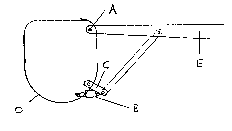Une partie des informations de ce site Web a été fournie par des sources externes. Le gouvernement du Canada n'assume aucune responsabilité concernant la précision, l'actualité ou la fiabilité des informations fournies par les sources externes. Les utilisateurs qui désirent employer cette information devraient consulter directement la source des informations. Le contenu fourni par les sources externes n'est pas assujetti aux exigences sur les langues officielles, la protection des renseignements personnels et l'accessibilité.
L'apparition de différences dans le texte et l'image des Revendications et de l'Abrégé dépend du moment auquel le document est publié. Les textes des Revendications et de l'Abrégé sont affichés :
| (12) Demande de brevet: | (11) CA 2121823 |
|---|---|
| (54) Titre français: | ELEMENT DE SUSPENSION D'AILE D'AVION |
| (54) Titre anglais: | SOFT WING SUSPENSION |
| Statut: | Réputée abandonnée et au-delà du délai pour le rétablissement - en attente de la réponse à l’avis de communication rejetée |
| (51) Classification internationale des brevets (CIB): |
|
|---|---|
| (72) Inventeurs : |
|
| (73) Titulaires : |
|
| (71) Demandeurs : | |
| (74) Agent: | |
| (74) Co-agent: | |
| (45) Délivré: | |
| (22) Date de dépôt: | 1994-04-21 |
| (41) Mise à la disponibilité du public: | 1995-10-22 |
| Licence disponible: | S.O. |
| Cédé au domaine public: | S.O. |
| (25) Langue des documents déposés: | Anglais |
| Traité de coopération en matière de brevets (PCT): | Non |
|---|
| (30) Données de priorité de la demande: | S.O. |
|---|
Most aircraft currently being manufactured today use some
form of suspension system which will dampen the impact
forces of landing and bumps on the ground. None of the
airplanes manufactured today provide any means to dampen
any sudden flight loads or bumps while flying, except for
the flexing of the wing.
My invention is to provide a means to provide relative
movement between the fusealage and it?s supporting and
controling structures (wings, stabalizers) during flight.
It will also provide means to control the rate, neutral
position and amount of movement these surfaces are allowed.
By doing this the passengers in the airplane will enjoy
a smoother ride, and fatigue loads on the entire airplane
structure will be reduced. Inspection times and airframe
life could be extended as it is known that aircraft which
fly through turbulant air regularly (pipe line patrol)
have shorter inspection times and airframe life. The
dampened movement of the wing would also allow floats,
wheels or skiis to be mounted directly to the bottom of
the wing, which can now be used to absorb landing loads.
Note : Les revendications sont présentées dans la langue officielle dans laquelle elles ont été soumises.
Note : Les descriptions sont présentées dans la langue officielle dans laquelle elles ont été soumises.

2024-08-01 : Dans le cadre de la transition vers les Brevets de nouvelle génération (BNG), la base de données sur les brevets canadiens (BDBC) contient désormais un Historique d'événement plus détaillé, qui reproduit le Journal des événements de notre nouvelle solution interne.
Veuillez noter que les événements débutant par « Inactive : » se réfèrent à des événements qui ne sont plus utilisés dans notre nouvelle solution interne.
Pour une meilleure compréhension de l'état de la demande ou brevet qui figure sur cette page, la rubrique Mise en garde , et les descriptions de Brevet , Historique d'événement , Taxes périodiques et Historique des paiements devraient être consultées.
| Description | Date |
|---|---|
| Le délai pour l'annulation est expiré | 1997-04-21 |
| Demande non rétablie avant l'échéance | 1997-04-21 |
| Réputée abandonnée - omission de répondre à un avis sur les taxes pour le maintien en état | 1996-04-22 |
| Inactive : Demande ad hoc documentée | 1996-04-22 |
| Demande publiée (accessible au public) | 1995-10-22 |
| Date d'abandonnement | Raison | Date de rétablissement |
|---|---|---|
| 1996-04-22 |
Les titulaires actuels et antérieures au dossier sont affichés en ordre alphabétique.
| Titulaires actuels au dossier |
|---|
| PAUL WESLEY DAWSON |
| Titulaires antérieures au dossier |
|---|
| S.O. |